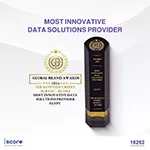Technology
Oracle Brings SPARC to the Cloud

New SPARC S7 Products with Software in Silicon now available in Oracle Cloud, Engineered Systems and Servers
Oracle announced major new additions to the SPARC platform that for the first time bring the advanced security, efficiency and simplicity of SPARC to the cloud. Built on the new SPARC S7 microprocessor, the latest additions to the SPARC platform include new cloud services, engineered systems and servers.
While the business benefits of the public cloud are increasingly clear, many organizations have yet to move enterprise workloads to the cloud due to performance, security and management concerns. To help eliminate those concerns and enable organizations to confidently move enterprise workloads to the cloud, the new SPARC platform is designed from the ground up to economically improve on cloud computing delivery of the most critical business applications and scale-out application environments.
The latest additions to the SPARC platform are built on the revolutionary new 4.27 GHz, 8-core/64-thread SPARC S7 microprocessor with Software in Silicon features such as Silicon Secured Memory and Data Analytics Accelerators, which delivers the industry’s highest per-core efficiency and enables organizations to run applications of all sizes on the SPARC platform at commodity price points. All existing commercial and custom applications will run on the new SPARC enterprise cloud services and solutions unchanged with significant improvements in security, efficiency and simplicity.
“We are still in the early phases of cloud computing adoption and as the market matures, organizations will increasingly move critical enterprise workloads to the cloud,” said John Fowler, executive vice president, Systems, Oracle. “To enable our customers to take advantage of this next stage of cloud computing to speed innovation, reduce costs and drive business growth, we are focused on delivering proven enterprise-grade services such as the Oracle SPARC platform in the Oracle Cloud.
Some of the key features of the new SPARC platform include:
- Effortless Security: The latest additions to the SPARC platform are designed for security and compliance and utilize Silicon Secured Memory capabilities to address malware attacks and programming errors. Wide-key encryption ciphers and hashes enable a fully encrypted cloud with less than two percent performance overhead. In addition, security is further enhanced through verified boot, immutable content that prevents unauthorized changes, enforced secured updates and a trusted and secure hardware and software supply chain that does not rely on intermediaries.
- Breakthrough Efficiency: By taking advantage of the open APIs in the processor and integrated Data Analytics Accelerators, which deliver up to 10x greater analytics performance spanning enterprise, big data and cloud applications, the latest additions to the SPARC platform reduce latency and cost. When compared to the x86 servers, the fully integrated S7-2 and S7-2L servers delivers up to 100 percent better per core efficiency, 1.7x better per core Java performance efficiency, 1.6x per core database OLTP performance efficiency, and 2-3x more bandwidth for high-traffic analysis and cloud apps.
- Straightforward Simplicity: Taking integration a step beyond the server, the Oracle MiniCluster S7-2 Engineered System dramatically simplifies the top four most challenging aspects of enterprise computing: security and compliance; high availability; patching and administration; and performance tuning. By eliminating the need for a standard platform or OS and reducing security and database administration time and effort, the new Engineered System enables organizations to:
- Secure systems by default by eliminating enterprise security expertise requirements
- Automate compliance monitoring and auditing in order to maintain the secure state of the system over time
- Make service resiliency effortless by taking advantage of a high availability operation that is engineered in to the hardware and software
- Ensure the platform will always be up to date with the latest software and security enhancements through simple full stack patching
- Enhance database and application performance through automatic performance tuning.
The new SPARC S7 processor-based cloud services and systems deliver commodity x86 economics and significant enterprise-class functionalities for security and analytics with Software in Silicon. They include new Oracle Cloud Compute platform services, the Oracle MiniCluster S7-2 Engineered System and Oracle SPARC S7 servers. These new products are designed to seamlessly integrate with existing infrastructure and include fully integrated virtualization and management for cloud.
The new Oracle SPARC Cloud service that is now part of the SPARC platform is a dedicated compute service to provide organizations with a simple, secure and efficient compute platform in the Cloud. The new service extends the complete suite of cloud services that Oracle provides to help organizations rapidly build and deploy rich applications—or extend Oracle Cloud Applications—on an enterprise-grade cloud platform.
To extend the security and performance benefits of the Oracle SuperCluster engineered systems to mid-size computing, Oracle has also introduced Oracle MiniCluster S7-2. Through full application and database compatibility with SuperCluster M7, Oracle MiniCluster enables organizations to reduce hardware and software costs at a fraction of the cost of commodity solutions. The new Oracle Engineered System is designed to support multi-tenant application and/or database consolidation, remote office/branch office computing demands and test/development environments.
Oracle has also introduced new additions to the SPARC server product line that extend the M7/T7 portfolio to address scale-out and cloud workloads at attractive new low price points. The new two-socket SPARC S7 servers are available in different configuration options that are optimized for either compute or storage and IO density and include Software in Silicon offload features for malware attack prevention, no compromise encryption and data analytics acceleration.




















































